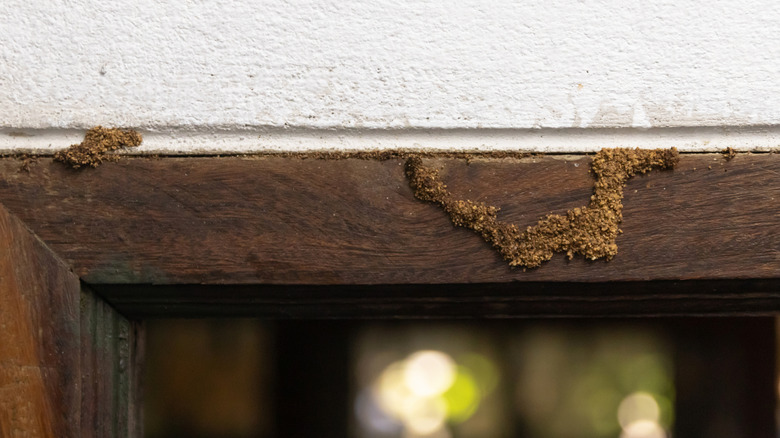Why Do Termites Keep Coming Back Even After Treatment? Here's What We Know
You finally heaved a sigh of relief because your home is free of those tiny invaders. You even found yourself rearranging the living room, dragging that old wooden bookshelf back out of hiding. For a moment, life felt normal again. But after a couple of days, you noticed a small hollow spot on a door frame. With it came a stomach-twisting realization that the nightmare you thought you'd buried is strolling right back in. Unfortunately, that emotional rollercoaster is surprisingly universal. According to Today's Homeowner, an estimated 600,000 homes fight termite issues. Termites often return when they weren't treated thoroughly the first time and when your home offers them everything they crave, namely water and plenty of cellulose to munch on.
Now, if you only had a single treatment, there's your first red flag. One-shot termite treatments rarely help to get rid of termites because you're dealing with a species that literally builds civilizations. Even if you've gone the extra mile with multiple treatments, the number alone is sometimes not enough. Killing termites you can see with localized treatments is one thing, but tackling the ones hidden in the home or underground is a whole different matter. If you've focused only inside your home, the real threat, the primary colony layers upon layers beneath the soil, may still be alive, multiplying, and sending swarmers out. Further, constant moisture from plumbing leaks or poor drainage may be a problem. Add in the wood stacked too close to the house, the mulching around the foundation, or that paper pile you meant to recycle, and it's easy to see why any lingering termites will march back in.
Keep termites from returning after treatment with these tips
Termites will return to any home that doesn't have proper perimeter barriers or baits and offers constant food and water. To get rid of them, keep your home moisture-free. Check every nook and cranny for plumbing leaks to fix, and inspect your gutters. Oftentimes, water can get stuck and invite pests like termites back to the house, so keep your gutters unclogged and clear of leaves and other debris with regular cleaning and inspection.
When it comes to wood and paper, we all hoard a little, but too much will get you into trouble. Firewood should never touch your house. Stack it around 20 feet away on a raised platform so intruders can't find a way inside. If you have extra newspapers or cardboard, store them off the ground in dry areas, preferably in sealed containers. Ventilation also matters. Your crawl spaces and basements should breathe. Keep air circulation with ceiling fans or open windows where possible. Good airflow dries out hidden corners that termites love. And if you spot any branches brushing your siding or roof, trim them back to keep termites from easily accessing your property.
Finally, hire a professional so termites don't return. Using a homemade termite treatment with on-hand ingredients may be fine for a minor nuisance, but termites are strategic and resilient, so many DIY solutions will only help for a short period. Pros can identify hidden infestations and implement plans and products that actually work long term. Many businesses also offer follow-up inspections and re-treatments if you find the first wasn't completely effective, often providing it for free as part of their contract. Sure, professional intervention costs a bit more, but it beats waking up to the surprise of new termites all over again.

